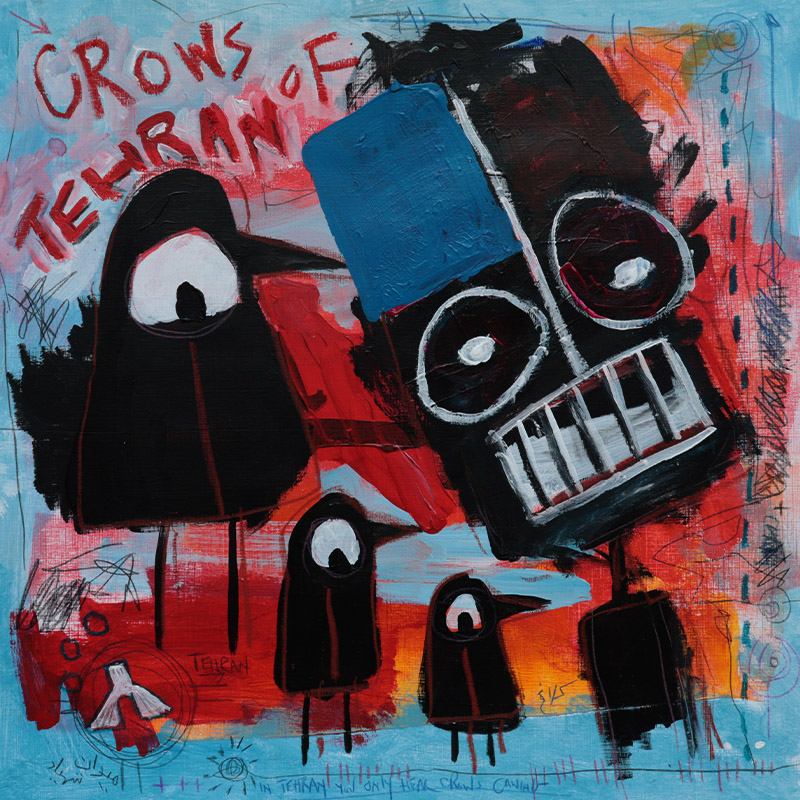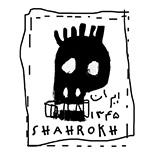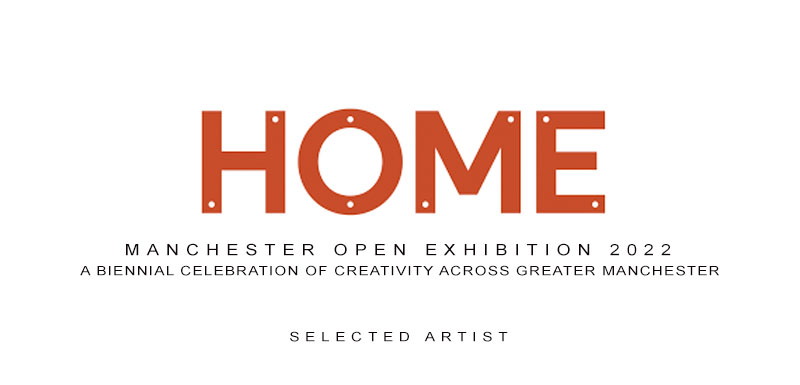On crows, memory and home:
Shahrokh Nael’s Crows of Tehran
Shahrokh Nael remembers the cold, revolutionary winter of 1978/9. In Tehran, his then-home, he wandered the streets. Violence was erupting, political tensions were taut. What he remembers most though are the crows, their signature raspy caws reverberating around the city. A sound that, far more than anything else, Shahrokh has come to associate with this generation-defining violence.

Tehran – 2021’s Collections – Crows of Tehran – Selected work – HOME Manchester Open Exhibition 2022 – Acrylic, Oil Pastel and Colour Pencils on Acrylic Paper 40cm x 40cm
‘Crows of Tehran’ is a painting about Shahrokh’s recollection of this time. It’s the tenth painting in a series of 18 (separated into two series of nine) that he’ll exhibit together at a later date. But first, ‘Crows’. It’s a work of acrylic paint, oil pastel and colour pencil, a square shaped work, the impact of which defies its restrained 40x40cm dimensions.
It is not necessary to know the entire history of the Iranian revolution in order to approach ‘Crows of Tehran’, but the visceral nature of the work will certainly make you curious. In the most literal of terms, the Iranian revolution was a series of political and social events in the late 1970s. They culminated in the overthrow of the Shah and the installation of an Islamic republic under the rule of the Ayatollah Kohmeni, after a revolt forged by both leftist and islamist opposition to the Shah. Literal is not, however, the realm in which Shahrokh’s paintings operate. ‘Crows of Tehran’ is a painting which operates along the dual axes of memory/forgetting and absence/presence. It is a response to, and a recollection of life-changing conflict.
These ideas of memory and forgetting are abundant in the work. Three simplified — almost childish — bird figures catch our attention. They are flat, black, and in profile. They seem to absorb the colour and light around them, of which there is plenty. When Shahrokh isn’t working with black, he reaches for sky blues, fiery orange-reds. Unapologetic swathes of these colours form the background to the painting. It’s the simplicity of these colour choices that gives them their power. There is no mistaking the violent intent behind those oranges and reds. There is also no mistaking the joy and levity behind the bright sky blues. It is as if we are being reminded that the sky continues to be blue during war too.
Faces occur over and over in Shahrokh’s work, not least here in ‘Crows’ — one almost entirely dominates the space. Using a black paint heavy with deep reds too, he has painted a simplified face. Shahrokh’s figurative style renders it as block shapes; two circles for eyes, a grid for a mouth. The details appear to be scratched out, rather than painted on. It is deeply troubled, and troubling too. We don’t know whether this is oppressor or oppressed. Perhaps it doesn’t matter — this painting is a recollection — the traumatised head/figure could stand for citizens, leaders, rebels, Shahrokh himself. It is evocative of a time, a pervasive memory. It is all of those things, compressed over time.
This leads us on to the idea of presence and absence. Something Shahrokh explores in ‘Crows of Tehran’. Literally speaking, the artist was present in Iran during the revolution, though the events of the revolution in turn led to his absence. Shahrokh moved to the UK as a refugee from the conflict in 1980. These paintings in some way play on those presences — they are lively and active expressions of his memory — but memories they are too; surreal, non-linear, pulling on sensory imprints like the calls of those crows. As global refugee crises around the world continue, sometimes more in the gaze of Western media than others — but nevertheless always, always ongoing, it is important to look at artwork like Shahrokh’s. As observers, we might see refugee crises as something only in the present, or we might think of them as isolated geopolitical events confined to certain distant locations and moments. Making ourselves look at ‘Crows of Tehran’ reminds us that people who seek refuge may have deeply complicated relationships with ideas of home, safety, and memory. That there is art and beauty and pain in those relationships. That granting refuge is just the first step. That much still remains to do. That pain is not absent, even when it is no longer present.
‘Crows of Tehran’, is a portrait of conflict, and how conflict can lodge in the mind and the memory. Its use of text and sensory evocation place us right in Shahrokh’s subjective experience. We are reminded that these experiences are not isolated, and are deeply entwined with the city, the street and the everyday. There is nothing more normal than listening to the call of birds and remembering home. For Shahrokh, there is nothing more powerful either.
Written by Lucy.H
Date of Publication: 01/01/2022

